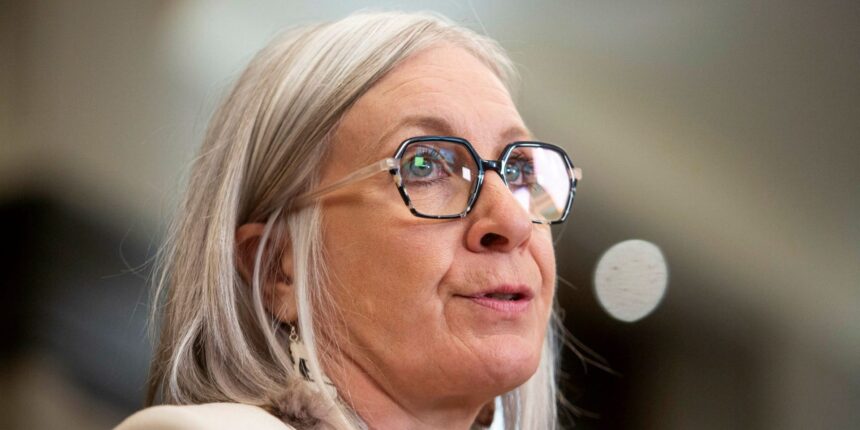In the shadow of Toronto’s gleaming financial towers, 24-year-old Aisha Rahman clutches her master’s degree in one hand and rejection letters in the other. Despite her impressive credentials, she represents a growing crisis in Canada—youth unemployment that has reached alarming levels, particularly among recent graduates. The situation demands immediate attention as experts warn that an entire generation risks falling behind economically without targeted intervention.
“I’ve applied to over 200 positions in the past six months,” Rahman confides. “My student loans are mounting while opportunities seem to be vanishing. It feels like the system wasn’t designed for us to succeed.”
The statistics paint a troubling picture. Youth unemployment currently sits at 12.8 percent—nearly double the national average—with underemployment affecting an additional 27 percent of Canadians aged 18-29. This means nearly 40 percent of young Canadians are either without work or working jobs far below their qualification levels.
Dr. Marcus Chen, labor economist at the University of Toronto, points to structural problems in Canada’s employment landscape. “We’re witnessing a fundamental mismatch between education and market needs,” he explains. “Universities continue producing graduates for industries that aren’t hiring at previous levels, while skilled trades and technical positions go unfilled.”
The problem extends beyond simple job scarcity. According to CO24 Business analysis, young Canadians face a perfect storm of challenges: rising housing costs consuming over 50 percent of entry-level salaries in major urban centers, student debt averaging $28,000 per graduate, and gig economy positions replacing stable career-track jobs.
Provincial governments have implemented various programs with mixed results. British Columbia’s Skills Training for Youth initiative has shown promise, with 68 percent of participants securing full-time employment within six months. Meanwhile, Quebec’s entrepreneurship grants for under-30s have spawned over 1,200 youth-led startups since 2022.
At the federal level, the recent $2.7 billion allocation toward addressing youth unemployment reveals acknowledgment of the crisis, but critics question whether the approach is sufficiently targeted.
“We need coordinated policy that addresses the entire ecosystem,” argues Jennifer Westbrook, Director of the Canadian Youth Employment Coalition. “This means educational reform, targeted industry partnerships, affordable housing initiatives, and stronger labor protections for young workers. Piecemeal solutions simply haven’t worked.”
Examining international models offers potential directions. Germany’s dual education system, combining classroom learning with practical apprenticeships, has maintained youth unemployment below 6 percent even during economic downturns. Finland’s “Youth Guarantee” program ensures every person under 25 receives either a job offer, continued education, or training within three months of unemployment.
Canadian business leaders are increasingly recognizing their role in addressing the crisis. The Business Council of Canada recently launched a consortium pledging to create 25,000 paid internships specifically designed to bridge the experience gap facing new graduates.
“Companies can’t just complain about skills shortages while refusing to invest in developing talent,” notes Michael Sabia, CEO of Meridian Industries, who recently implemented a youth hiring quota across the company’s operations. “The business community needs to step up with concrete commitments.”
Indigenous youth face even steeper challenges, with unemployment rates exceeding 22 percent in some communities. The Aboriginal Skills and Employment Training Strategy has shown promise but requires significant expansion to meet existing needs.
“The barriers for Indigenous youth are systemic and intergenerational,” explains Theresa Cardinal, coordinator of Indigenous youth programs at Winnipeg’s Employment Action Centre. “Effective solutions must be community-led and culturally grounded while providing genuine pathways to economic opportunity.”
As Canada News has documented over the past year, the consequences of sustained youth unemployment extend far beyond immediate economic impacts. Studies link prolonged early-career unemployment to reduced lifetime earnings, delayed family formation, increased mental health challenges, and diminished civic engagement.
Political will for meaningful reform appears to be growing. Recent CO24 Politics polling indicates that 72 percent of Canadians now rank youth unemployment among their top five concerns, up from 48 percent just two years ago.
The path forward requires reimagining both education and employment for a rapidly changing economy. Promising innovations include micro-credentialing programs that allow for quick skills acquisition, community benefit agreements ensuring local hiring on public projects, and expanded co-op education models connecting students with employers earlier in their academic journeys.
“This isn’t just about jobs—it’s about creating systems that enable young people to build meaningful careers and contribute to society,” emphasizes Dr. Chen. “The future prosperity of Canada depends on how effectively we integrate young talent into our economy today.”
As Canada approaches a federal election year, the question remains: will policymakers deliver the bold, comprehensive approach needed to address youth unemployment, or will another generation of talented young Canadians find themselves holding degrees that open fewer doors than promised?










